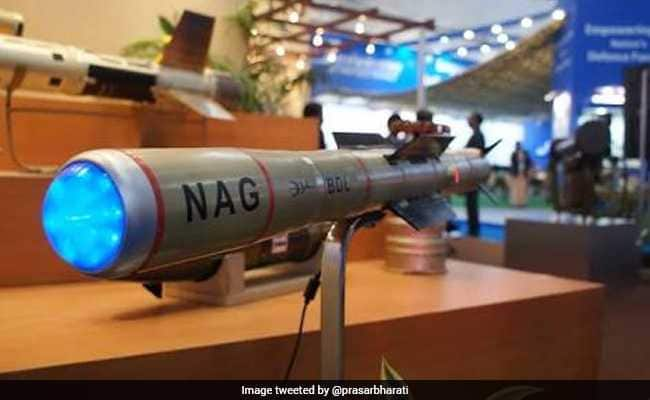In a major shot in the arm for the defence firepower of India, the Defence Research and Development Organisation (DRDO) carried out three successful test firings of the anti-tank missiles in the Pokhran firing range. With this India has moved closer to the induction of the indigenous-made Nag anti-tank missiles in the Indian Army. According to DRDO officials, “The missiles were test-fired during both day and night on Sunday during the trials. All three tests were successful.” The government sources have said that the missile is in the final stages of induction in the Army, which will use the missile by mounting them on modified armoured vehicles.
The Defence Acquisition Council last year approved the procurement of DRDO’s designed and developed NAG Missile System (NAMIS). It has been developed at a cost of Rs 524 crore. The Missile System which is going to boost the military firepower of India in a big way carries a third generation Anti-Tank Guided Missile, the NAG, along with the Missile Carrier Vehicle (NAMICA). The NAG is a third-generation anti-tank guided missile developed by DRDO, having top attack capabilities that can engage and destroy enemy tanks during the day and night.
NAG was one of the initial big projects as one of the first five strategic missiles planned under the Integrated Missile Development Programme managed by DRDO in the 1980s. Other missiles developed under the Programme were the Agni, Prithvi and Akash. The other three have been successfully developed and inducted into the military forces of the country. In fact, they constitute the core of India’s military and missile firepower. The NAG is also expected to emerge as one of the mainstays of India’s missile inventory.
It is relevant to mention here that earlier this year it was reported that in a major defence deal, India decided to buy more than 3,000 Milan 2T anti-tank guided missiles from France. The deal was reportedly set to be a stopgap agreement before the Indian Army gets its home-grown third-generation anti-tank guided missiles that are undergoing trials. The deal is going to be worth over Rs 1,000 crores. Now, with the DRDO successfully test firing the indigenous NAG anti-tank missiles, India would be able to fulfil its requirement of anti-tank missiles. This also indicates a step towards the use of indigenous defence equipment and weapons instead of foreign weapons and defence equipments. The Modi government has clearly started from where it had left in the first tenure as far as strengthening the defence sector is concerned.
